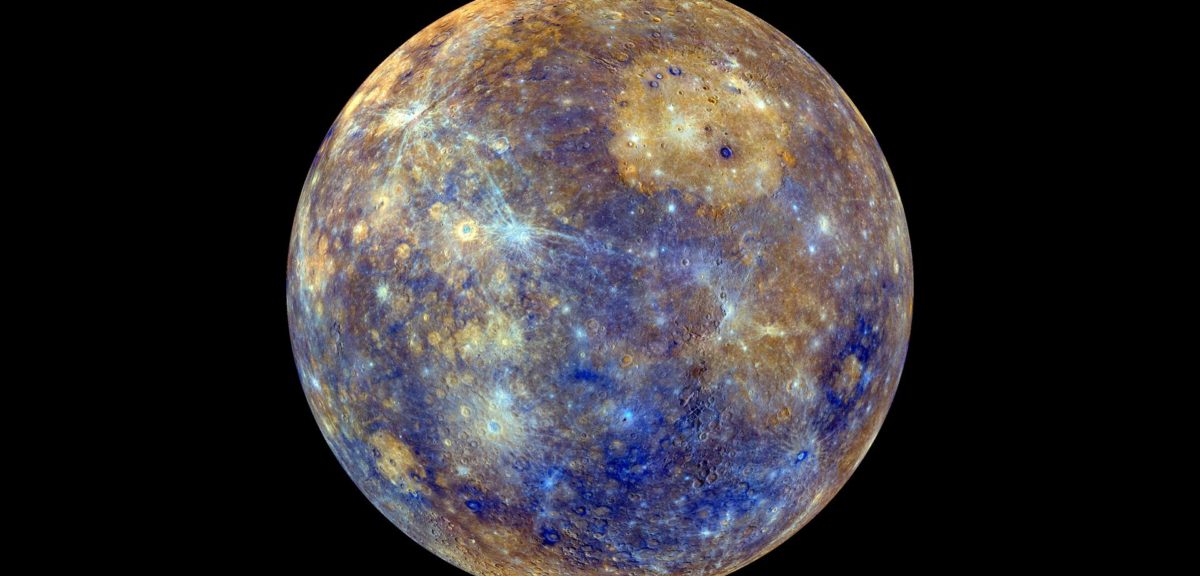
Computer Photomosaic of Mercury’s Southern Hemisphere. The Image Processing Lab at NASA’s Jet Propulsion Laboratory produced this photomosaic after the Mariner 10 spacecraft imaged the region during its initial flyby of the planet in 1974. (NASA/JPL)
Mercury is the closest planet to the Sun, and very little is really known about this hot rocky orb.
So far, only two space probes have ever studied Mercury.
NASA’s Mariner 10 flew past the planet three times between 1973 and 1974.
The flybys allowed scientists to map about half the planet, discover its thin atmosphere and detect its magnetic field.
The second and more recent NASA mission sent the MErcury Surface, Space ENvironment, GEochemistry, and Ranging (MESSENGER) probe to orbit Mercury between 2011 and 2015.

A large indentation at center, in the north polar region of Mercury, has been shown to harbor water ice, thanks to measurements by the MESSENGER spacecraft. (NASA/Johns Hopkins University Applied Physics Laboratory/Carnegie Institution of Washington)
Among the findings made during MESSENGER’s mission included discovering that Mercury was abundant in volatile elements (potassium, sodium, and sulfur), that there’s water ice at its poles and that volcanism played an important role in shaping the planet’s surface.
Information from MESSENGER also allowed scientists determine Mercury’s massive core makes up 85% of its radius and that its crust is about 35 kilometers thick.
Michael Sori, from the University of Arizona, who used data from MESSENGER to conduct sophisticated mathematical calculations, has estimated that Mercury’s crust is denser than aluminum and that it is about 26 kilometers thick, 9 kilometers thinner than Messenger’s initial findings.

Artist’s depiction of the BepiColombo mission, with ESA’s Mercury Planetary Orbiter – left and JAXA’S Mercury Magnetospheric Orbiter – right. (NASA)
Sori’s findings are outlined in a new study published in the journal Earth and Planetary Science Letters
Scientists are hoping to learn even more about the innermost planet with the upcoming BepiColombo mission from the Japan Aerospace Exploration Agency (JAXA) and the European Space Agency (ESA).
According to ESA and JAXA officials, the mission, which will be carried out by two spacecraft – the Mercury Planetary Orbiter (MPO) and the Mercury Magnetospheric Orbiter (MMO), will conduct a comprehensive study of the planet.
The launch of the spacecraft is planned for this October and is expected to begin orbiting Mercury sometime in December 2025.
























Comments are closed.